Pinnacle Home Improvements is a renowned roofing contractor specializing in roofing solutions and roofing installations. As such, we are regularly asked about architectural shingles. While there are so many types of asphalt shingles, these in particular have gained popularity among homeowners and builders for their durability and aesthetic appeal. These shingles are distinguished by their dimensional thickness and varied shapes, which mimic the look of traditional cedar or slate roofing. Let’s go further into what they are and how we install them.
How to Install Architectural Shingles: A Step-by-Step Guide
Architectural shingles, also known as laminated or dimensional shingles enhance the visual interest of a home. Their multi-layered structure provides a superior level of protection against the elements.
When it comes to installation, precision is key. Architectural shingles require a methodical approach to ensure they deliver their full potential in terms of performance and longevity. The process begins with a clean, solid deck, followed by the careful placement of an appropriate underlayment to create a waterproof barrier. Proper alignment and nailing techniques are then critical to prevent future leaks and wind damage.
The benefits of choosing architectural shingles are multifaceted. They offer improved resistance to wind lift and boast a longer lifespan compared to three-tab shingles, often accompanied by extended warranties. Their aesthetic variety allows for a customization that can significantly boost a home’s curb appeal and potentially increase its market value. Homeowners looking to invest in a roof that offers both form and function will find architectural shingles an excellent choice.
Preparation for Installation
Proper preparation is crucial for a successful architectural shingle installation. It ensures the longevity of the roof and guarantees that the materials lay down correctly.
Assessing the Roof Structure
Before new shingles are installed, the roof’s structural integrity must be verified. One should look for signs of damage such as warping, wood rot, or previous water infiltration. It’s important to ensure that the roof can support the weight of the new shingles. Assessing the roof deck involves a comprehensive check for any areas that need repair or replacement.
Gathering Required Materials
Gathering the right materials is essential for a smooth installation process. The following table outlines the necessary supplies for installing architectural shingles:
| Material | Quantity | Notes |
| Architectural Shingles | Depending on square footage | Consult manufacturer’s coverage guidelines |
| Roofing Felt | Sufficient to cover the entire roof deck | Provides a layer of protection between the deck and the shingles |
| Drip Edge | Perimeter of roof length | Installed along the eaves and rakes to direct water away from the roof |
| Ice and Water Protector | As required | Placed around vulnerable areas such as valleys and eaves |
| Roofing Nails | As needed | Length to comply with code requirements |
| Sealant | Several tubes | Use around flashings, vents, and joints |
| Flashing | As needed | Essential around chimneys, vent pipes, and adjoining roof surfaces |
Additionally, tools such as a roofing hammer, utility knife, and a chalk line will be necessary. For safety, harnesses, ladders, and protective gear must be on hand. Careful calculation of materials needed, based on the architectural plans and the specific type of shingle chosen, will avoid mid-project shortages.
Underlayment and Starter Strips
Before installing architectural shingles, a proper base is essential. The underlayment provides a secondary barrier against water, while starter strips are crucial for a straight edge and proper shingle adhesion.
Laying the Underlayment
To lay the underlayment, one starts at the bottom of the roof deck and rolls out one course horizontally. They should:
- Measure the roof to cut the underlayment to the appropriate length.
- Roll out the first course of underlayment with a slight overhang at the eave, roughly 1/4-1/2 inch.
- Nail the underlayment down at the edges, spacing nails approximately 12-18 inches apart.
- Overlay each subsequent course by at least 2 inches over the course below.
- Continue until the entire roof is covered, making sure to smooth out any wrinkles or air bubbles.
Placing Starter Strips
For the starter strips, the placement along the eaves provides the first layer of shingle installation:
- Cut the starter strips to the length of the eave.
- Position them so that they overhang the eave by about 1/4-3/4 inch.
- Nail the starter strips in place, approximately 1-3 inches from the shingle’s edge.
- Place nails about 3-4 inches apart along the strip to ensure proper hold.
Using these methods, one ensures their architectural shingles have the proper foundation for installation, reducing the risk of leaks and increasing the overall longevity of the roof.
Shingle Installation Procedure
Architectural shingle installation involves careful placement of each course, correct nailing techniques, and precise alignment and overlapping to ensure a durable and visually pleasing result.
Positioning the First Course
To begin, architectural shingles should be laid out from the bottom edge of the roof, making sure the first course overhangs the edge by about 1/2 to 3/4 inch. This overhang is crucial to direct water into the gutters and away from the roof structure. Start by placing a full shingle at one end of the roof and secure it in place following the manufacturer’s guidelines for proper shingle placement.
Nailing Techniques
Nailing is a critically important step in shingle installation to withstand weather conditions and to prevent future repairs. Use the following checklist for proper nailing:
- Nail Quantity: Most manufacturers recommend using four nails per shingle.
- Nail Placement: Position nails approximately 1 inch above the cutouts and not in the self-sealing strip.
- Nail Driving: Drive nails straight so that the heads are flush with the shingle surface; avoid under or over-driving.
By adhering to these nailing guidelines, the shingles will be properly secured and have the best chance of reaching their maximum lifespan.
Aligning and Overlapping Shingles
Successive courses of shingles should be properly staggered to avoid leakage and ensure an appealing appearance. Here’s a quick guide:
- Aligning: Make sure the shingle edges are aligned with the underlying shingle’s adhesive strip to enhance the bond.
- Overlapping: Each new course should overlap the top of the cutouts in the shingle below by about an inch, creating a step-like pattern known as a stair-step or offset pattern.
Precise overlapping is fundamental to guard against water penetration and to contribute to the overall aesthetics of the roof.
Trimming and Fitting
Before installing architectural shingles, it is essential that one understands how to trim and fit them properly. This section addresses precise cutting of shingles to size and the techniques used when working around common roof features.
Cutting Shingles to Size
When cutting shingles to the correct size, one should always use a sharp utility knife and a straight edge. The process involves the following steps:
- Measure the space where the last shingle will go.
- Mark the back of the shingle with a chalk line for where the cut needs to be made.
- Place a straight edge along the line to guide the utility knife.
- Cut through the shingle with the knife, applying firm and steady pressure for a clean edge.
It’s advisable to cut multiple shingles at once by stacking them, ensuring they are aligned and then making the cut. This approach can save time and help maintain consistency.
Working Around Roof Features
Architectural shingles require particular attention when fitting around vents, chimneys, and other obstacles on the roof. Here are some recommendations:
- Vents:
- Measure the area around the vent carefully.
- Cut the shingle to fit snugly around the vent.
- Use roofing sealant around the vent to prevent water infiltration.
- Chimneys:
- Leave a gap of at least 1/4 inch between the shingle and the chimney to allow for expansion.
- Cut the shingle to conform to the chimney shape.
- Apply flashing around the chimney for watertight sealing.
In both cases, it is critical to ensure that no areas are left unsealed to avoid leaks. Shingles should be cut in a manner that complements the feature, maintaining the roof’s aesthetic while ensuring functionality and durability.
Finishing Touches
Finalizing the installation of architectural shingles requires careful attention to detail and precision. These last steps are crucial for the longevity and effectiveness of your roofing system.
Installing Ridge and Hip Shingles
One must ensure that ridge and hip shingles are installed using the correct technique for a polished appearance and to prevent water infiltration. Begin by cutting your shingles into ridge cap units if they are not already pre-cut. They should then be aligned and overlapped properly, with the thicker edge facing outward. For the hip shingles, start from the bottom and work upwards, adhering with roofing cement and fastening with nails 1 inch from the edge and 6 inches apart.
Final Inspection and Maintenance
Once the shingles are installed, a thorough inspection is necessary to confirm the integrity of the installation. Check for proper alignment, nail placement, and sealing of the shingles. Maintenance should be performed regularly; homeowners should look for damaged or missing shingles, especially after severe weather. It is recommended to have professional inspections annually to detect and solve any issues promptly, ensuring the roof’s resilience and longevity.
If you have any additional questions or are ready to begin your new roof installation project, contact our team here at Pinnacle Home Improvements.








